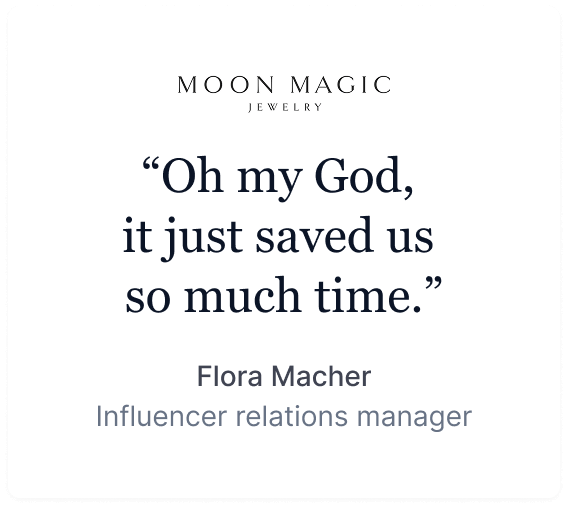Learn How We Calculate Influencer Rankings
HypeAuditor’s influencer rankings are trusted by thousands of brands, agencies, and platforms around the world. Instead of relying on vanity metrics like follower count, we evaluate creators using transparent, data-backed methods that reflect real influence. Our rankings are designed to highlight authentic performance, meaningful engagement, and audience quality across platforms and geographies.
How the rankings are calculated: algorithm and factors
HypeAuditor’s influencer rankings are built on a structured methodology that combines proprietary algorithms, machine learning models, a deep understanding of behavior of various social media platforms, and fraud patterns.
To properly rank influencers, evaluation of raw performance metrics is not enough, what’s important is to estimate quality, authenticity, and contextual relevance of an influencer’s audience and engagement.
Generally, the rankings are calculated in the following way:
1. Data collection and normalization
We start by gathering publicly available* data and content from creators’ profiles from major platforms including Instagram, TikTok, and YouTube. This data includes:
- Profile metadata (link, full name, avatar, language, biography, location (country/city/state), brand and common interests, notable engaged users, sponsored posts).
- Contact points (email and linked social network profiles).
- Content (images, graphics, photos, profiles, audio and video clips, sounds, musical works, liaisons with audience, texts of the comments, works of authorship, applications, links and other content or materials from social network profiles).
Once collected, this data is then normalized and structured using behavioral clustering techniques to ensure fair comparisons.
*This data is publicly available under GDPR Art. 14(1)(c). We use it based on legitimate interest for direct marketing (GDPR Recital 47) without affecting creators’ rights. Private data like DMs or account insights is never accessed.
2. Data processing and ranking factors
Next, the system evaluates the quality and authenticity of each influencer and their audience by processing the raw data. This step is critical because raw metrics alone don’t always reflect genuine interest and therefore cannot act as reliable ranking factors.
HypeAuditor’s analytical engine processes millions of data points, and here are the core signals that matter most for influencer rankings:
Audience authenticity
A large audience doesn’t mean real influence, that’s why audience authenticity is one of the most important factors in our rankings. HypeAuditor’s ML-based fraud detection models analyze more than 50 behavioral patterns to detect low-quality or allegedly fake followers with 95.5% accuracy.
We filter out most bots and automated accounts, detect mass-follow/unfollow patterns, and monitor sudden, unnatural spikes in followers or engagement. As a result, the influencers ranked highest are far less likely to have artificial or manipulated audiences.
Engagement quality
Not all likes and comments are genuine and our ranking system analyzes authenticity of comments, follower-to-engagement rates, and consistency of engagement over time.
This ranking factor promotes influencers who truly resonate with their audience unlike those who run one-off campaigns to boost numbers or use other unfair methods.
Audience relevance & demographics
Audience authenticity and engagement is not enough itself to ensure the influencer quality. That’s why we also consider demographic alignment (by juxtaposing age, gender, and location), content niche and brand fit, as well as audience benchmarking against other creators.
This way, rankings reflect influencers whose audiences are both real and relevant to their niche and market.
Growth and stability
Influencers tend to grow but the growth itself is not a reliable signal without context, Our system evaluates long-term growth trends and short-term spikes, growth correlation with posting consistency, and indicators of audience fatigue or declining engagement.
Stable, organically growing creators that have no suspicious patterns rank higher because they’re more likely to deliver reliable results over time.
These primary ranking factors are combined with a set of secondary signals and then HypeAuditor’s proprietary engine weighs and aggregates all these elements to produce a fair, data-backed ranking of influencers.
3. Ranking structure: global, country, and category
Finally, influencers are broken down into the following three dimensions:
- Global rankings: Covering all creators, regardless of location or niche.
- Country rankings: Grouping creators based on the primary location of their audience.
- Category rankings: Organizing influencers by their main content niche (e.g., fashion, fitness, music).
Scores are recalculated daily, so the rankings always reflect the latest available data. This structure allows brands and agencies to search for top-performing creators in a way that fits their exact needs, whether that’s targeting a specific market or finding leaders in a particular niche.
Learn more:
Who creates our rankings?
Our influencer rankings are developed by the HypeAuditor Analytics Team, a group of data scientists, machine learning engineers, and influencer marketing specialists. They continuously refine HypeAuditor’s ranking engine, detection models and benchmarks, working with billions of data points collected from major social networks.
Tim Bondarenko, Chief Technology Officer, is responsible for building and maintaining the analytics infrastructure. With a strong technical background, he’s shared his expertise at international tech events such as OpenStack Summit in Paris (2014) and Sydney (2017), and HUAWEI CONNECT in Shanghai (2018). Tim focuses on making sure the system remains fast, scalable, and reliable.
Mikhail Korotkov, AI Engineer, develops the machine learning models that power HypeAuditor’s ranking and analytical engine. He has more than seven years of experience in B2B analytics, working with advanced ML techniques like multimodal embeddings, vector search, and LLMs. Over the past five years at HypeAuditor, Mikhail has built the core AI models behind the rankings, sharing his research and findings on Medium.
Nick Baklanov, Marketing Intelligence Analyst, works on interpreting the data and aligning it with real industry trends. His insights on influencer marketing have been featured in numerous publications, including Forbes, Social Media Today, Business Insider, El País, and Wired. He also contributes to industry discussions at events and roundtables. By comparing our analytics with what’s happening in practice, Nick helps keep the rankings accurate and relevant.
Bringing these efforts together is Alexander Frolov, CEO and Founder of HypeAuditor. He combines technical expertise with a deep understanding of the influencer marketing industry, guiding the platform’s focus on transparency and accuracy. Alexander regularly speaks at global conferences, including SocialDay and Zilele Biz, where he shares insights on building trust and fighting fraud in influencer marketing.
With a team of experts behind the scenes and a clear set of principles guiding the process, our rankings are built to reflect genuine influence. No one can pay to be ranked higher. All rankings are fully automated, impartial and based on measurable performance. While the system runs independently, our team continuously monitors its output to make sure the results stay relevant, fair, and aligned with what marketers need most.
Why we created influencer rankings
A growing need for trustworthy data
Influencer marketing has often struggled with problems such as inflated metrics, fake engagement, and a lack of transparency. As the industry matures, these issues become harder to ignore. Brands today need to evaluate creators not just by surface-level numbers but by the quality of their audience, content, and long-term value.
We believe influencers should be treated as business partners, not just content creators. Choosing who to work with requires the same level of care and verification as any other partnership decision.
Protecting your brand and budget
Our goal with these rankings is to help marketers avoid wasted spend, protect brand reputation, and prevent campaigns from underperforming due to bad data.
HypeAuditor’s rankings work as a due diligence tool. They help teams identify potential red flags before investing in a creator relationship. By highlighting fake followers, bot activity, and engagement manipulation, we help brands reduce the risks that still plague many influencer campaigns.
Keeping marketers informed as things change
The creator economy moves quickly. Audiences shift, engagement patterns evolve, and platforms constantly change how they work.
That’s why our rankings update regularly. Brands get a consistent view of how creators are performing in real time. Continuous monitoring keeps marketers in the loop, so they can act early if a creator’s performance drops or if new opportunities arise.
A commitment to raising industry standards
From the beginning, HypeAuditor has worked to make influencer marketing more transparent, fair, and data-driven. We aim to bring clarity to a space that often feels uncertain. Our rankings don’t just surface high-performing creators, they also help raise expectations across the industry.
This system gives marketers the clarity to seek real answers through data, hold creators to higher standards, and make decisions based on real signals rather than momentary virality or hype.
How our rankings help marketers
These rankings are built to be practical and actionable. They help marketers:
- Find creators who actually connect with their audience
- Look at influencers side by side with clear, data-backed context
- Focus their budget where it actually drives results
We created them not just for our clients, but for the brands, agencies, and platforms trying to navigate this space more clearly.










